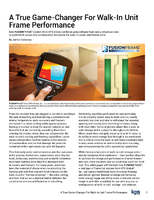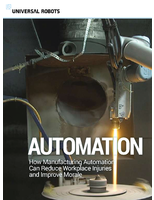ASTM Standard covers measurement systems analysis.
Press Release Summary:
Developed by Subcommittee E11.20 on Test Method Evaluation and Quality Control, ASTM E2782 covers many core issues of Measurement System Analysis, which is an important topic in engineering, manufacturing, laboratory practice, and business process applications. As currently approved, standard applies to variable measurements and nondestructive applications. It will be useful anywhere measurement systems are used and/or where measurement error is important to assess.
Original Press Release:
Measurement Systems Analysis Is Subject of New ASTM Standard
W. CONSHOHOCKEN, Pa., - Measurement systems analysis is an important topic in statistics and quality for engineering, manufacturing, laboratory practice and business process applications. A new ASTM International standard, ASTM E2782, Guide for Measurement Systems Analysis (MSA), covers many core issues of MSA.
ASTM E2782 was developed by Subcommittee E11.20 on Test Method Evaluation and Quality Control, under the jurisdiction of ASTM International Committee E11 on Quality and Statistics.
According to Stephen Luko, a statistician with Hamilton Sundstrand, and a longtime member and former chairman of E11, when an object is measured and a result presented, typically some decision will be made and/or action taken as a result of the measurement result. In such cases, Luko notes, it is always reasonable to ask the following questions: "What is the error in the measurement result?" and "What is the error in the measurement process?"
"From a practical point of view, the user of a measured quantity wants to know how different might the measured quantity be from the true value of what has been measured," says Luko. "This is the essence of MSA."
As an example, Luko says that if the measurement error is too large, this result may render the measurement results either useless or of limited value." There are several components to measurement error as well, and the statistical practice of measurement systems analysis shows you how to separate these components and how to improve measurement performance for the various components," says Luko.
The new standard will be useful anywhere measurement systems are used and/or where measurement error is important to assess. This includes work by many ASTM committees, along with user communities found in manufacturing and engineering firms, and in more general business practices.
As currently approved, ASTM E2782 applies to variable measurements and nondestructive applications. E11.20 plans to incorporate destructive measurement applications as well as applications involving attribute type measurements in future revisions of the standard and invites all interested parties to contribute to this work.
To purchase ASTM standards, visit www.astm.org and search by the standard designation number, or contact ASTM Customer Relations (phone: 610-832-9585; service@astm.org). ASTM International welcomes and encourages participation in the development of its standards. For more information on becoming an ASTM member, visit www.astm.org/JOIN.
ASTM International is one of the largest international standards development and delivery systems in the world. ASTM International meets the World Trade Organization (WTO) principles for the development of international standards: coherence, consensus, development dimension, effectiveness, impartiality, openness, relevance and transparency. ASTM standards are accepted and used in research and development, product testing, quality systems and commercial transactions.
View this release on the ASTM Web site at www.astmnewsroom.org.
ASTM Committee D04 Next Meeting: May 4-6, ASTM International Headquarters, West Conshohocken, Pa.
Technical Contact: Stephen Luko, Hamilton Sundstrand, Windsor Locks, Conn., Phone: 860-654-3447; stephen.luko@hs.utc.com
ASTM Staff Contact: Christine Basile, Phone: 610-832-9728; cbasile@astm.org
ASTM PR Contact: Barbara Schindler, Phone: 610-832-9603; bschindl@astm.org
www.astm.org




